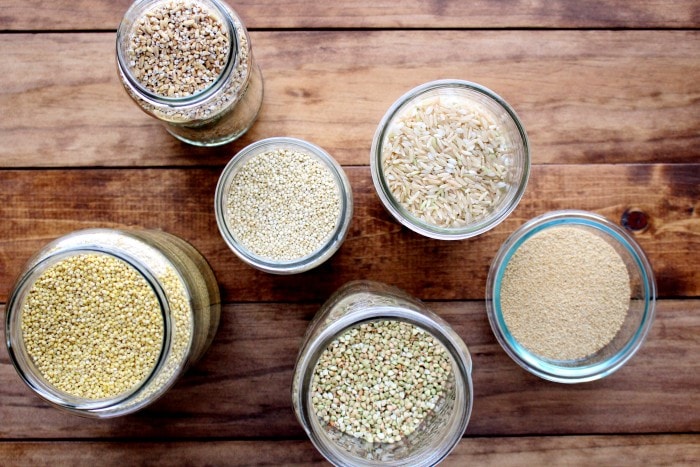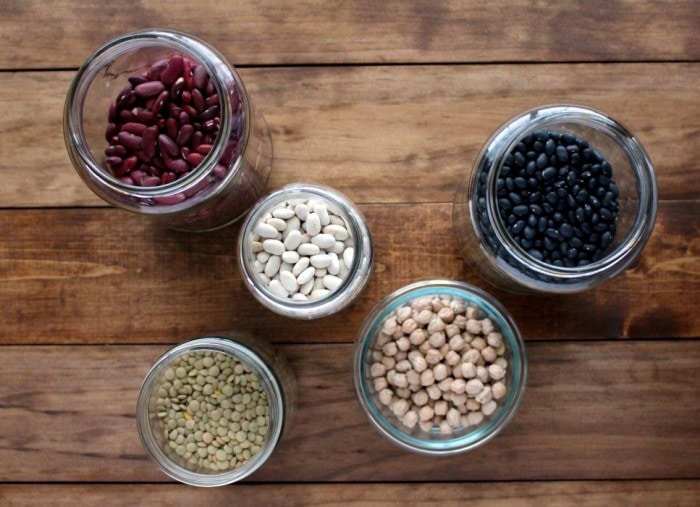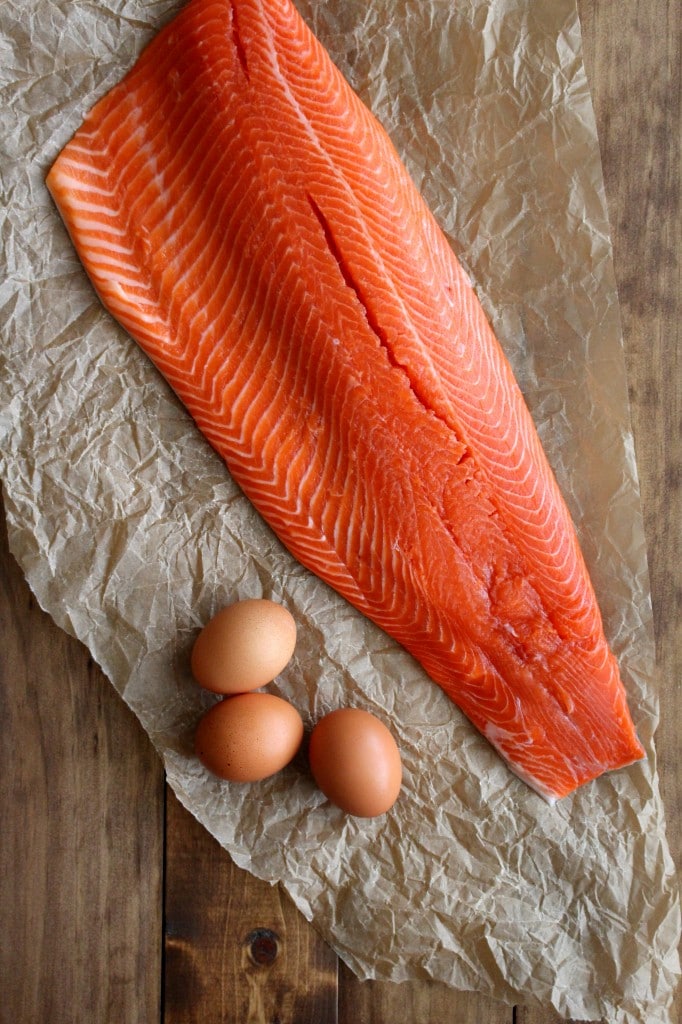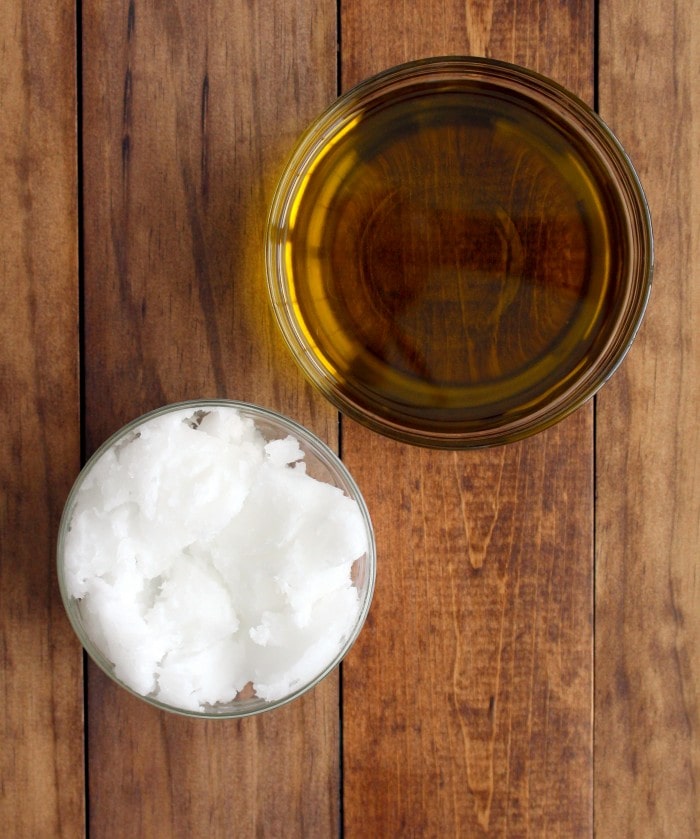This is your guide to building a gluten-free, whole foods-centered pantry.
 Grains– rice, quinoa, millet, amaranth, oats, buckwheat
Grains– rice, quinoa, millet, amaranth, oats, buckwheat
Gluten-free grains contain healthy complex carbohydrates, help us keep our energy levels up, and provide a good amount of vitamins and minerals like magnesium, manganese, copper, phosphorus, selenium and fiber.
 Nuts/Seeds– sesame, sunflower, almonds, pecans, walnuts, cashews, pumpkin, hemp, flax, chia
Nuts/Seeds– sesame, sunflower, almonds, pecans, walnuts, cashews, pumpkin, hemp, flax, chia
Most nuts and seeds contain high amounts of monounsaturated (healthy) fats. They can be a good snack choice because they help to keep you satiated, as well as stabilize your blood sugars. They are also high in vitamin E and omega-3 fats, which can reduce inflammation in the body.
 Beans/Legumes– black, pinto, kidney, cannellini, chickpeas, lentils
Beans/Legumes– black, pinto, kidney, cannellini, chickpeas, lentils
Beans and legumes are a great source of vegetarian protein, as well as high-quality carbohydrates. They are very high in soluble fiber, as well as magnesium, potassium, iron and folate. These nutrients can all help with the lowering of cholesterol, blood pressure and diabetes.
 Plant-Based Proteins– flax seed, hemp seed, peanut/almond butter, tofu, chickpeas, buckwheat, lentils, black beans, quinoa, sesame seeds, oats, tempeh
Plant-Based Proteins– flax seed, hemp seed, peanut/almond butter, tofu, chickpeas, buckwheat, lentils, black beans, quinoa, sesame seeds, oats, tempeh
There is lots of research that says that a largely plant-based diet can contribute to longevity and good health. This type of diet is very high in antioxidants, and can help fight against free radicals and chronic disease. If you eat a balanced, varied plant-based diet, you can absolutely get adequate amounts of protein that you need.
 Animal Proteins– fish, chicken, eggs
Animal Proteins– fish, chicken, eggs
Animal proteins are a complete protein, meaning they provide all of the essential amino acids that we need. If you stick to organic varieties of animal proteins, you can get healthy fats in your diet and even fat-soluble vitamins like A and D, that are found mostly in meat and eggs.
 Superfoods– maca, hemp seeds, bee pollen, nutritional yeast, protein powder, cacao powder, goji berries, spirulina
Superfoods– maca, hemp seeds, bee pollen, nutritional yeast, protein powder, cacao powder, goji berries, spirulina
There are so many new superfoods popping up on the shelves these days, and sometimes it can be a bit overwhelming. What classifies a food as a ‘superfood’? It is just a food that is nutrient-packed, and can help fight against disease. The way I look at it, pretty much all whole foods are superfoods, if they are eaten in their most natural state. But the list above contains certain foods that pack an extra punch of nutrition. Maca has been used for thousands of years for energy and hormone balance, bee pollen has basically every nutrient we need, spirulina is amazing for the immune system, and goji berries and cacao have an incredible amount of antioxidants.
 Spices and Herbs – turmeric, garlic, ginger, cayenne, parsley
Spices and Herbs – turmeric, garlic, ginger, cayenne, parsley
Spices and herbs not only add great flavor to our food, but also lots of extra health benefits. Turmeric is a powerful anti-inflammatory, garlic can help prevent and treat a cold, cayenne can boost your metabolism, and parsley can help with detox.
 Fats and Oils – olive oil, coconut oil
Fats and Oils – olive oil, coconut oil
Coconut oil and olive oil provide healthy fats that are great for overall health. Coconut oil can withstand very high heat, and both oils can even be used on your skin as a natural beauty remedy.
 GF Flours – coconut, almond, rice, quinoa, arrowroot, tapioca
GF Flours – coconut, almond, rice, quinoa, arrowroot, tapioca
These are the main flours that I keep in my pantry on a regular basis. Coconut and almond work very well together in baked goods, brown rice flour is a great alternative to wheat, and arrowroot is a great grain-free option.
 Sweeteners – maple syrup, coconut sugar, stevia, honey
Sweeteners – maple syrup, coconut sugar, stevia, honey
Stick with all-natural sweeteners over the processed white sugars. Coconut sugar works beautifully in baking, honey and real maple syrup are always my go-to breakfast sweeteners, and stevia is a great alternative to Splenda in beverages.
Of course, all fresh and frozen produce is gluten-free in it’s natural state. Fruits and vegetables should always be the building blocks of your daily meals.

